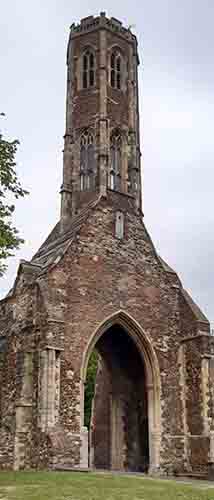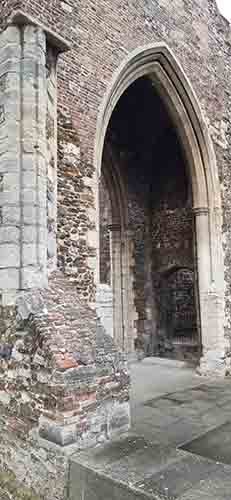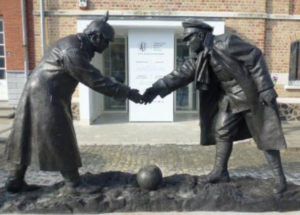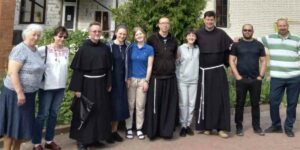The Franciscans have been in England since 1224. Friar Solanus Mary gives us some background and a tour of some of the friary ruins. (For Part 1, click here.)
Norfolk and Suffolk
A part of England with which I am familiar is the region of East Anglia. This region includes the counties of Norfolk and Suffolk. Many monastic and Franciscan ruins can be found in these counties – they are so numerous there would not be enough space to list them all. Let me, however, highlight a couple of important Franciscan sites: King’s Lynn, in Norfolk; and Dunwich, in Suffolk. By the way, if you are in the area, both of these sites are well-worth a visit.
Greyfriars Tower, King’s Lynn
King’s Lynn, known locally as Lynn, in Norfolk is still one of the country’s major sea-ports. It also provides the railway link to London, some one hundred miles away. In the centre of the town, in what is now a public park, can be found the Greyfriars Tower. This is all that remains now of the 13th century Franciscan friary and church. I can tell you that the tower is an impressive structure, as you will see from the photographs.

We are told that the Greyfriars came to King’s Lynn in the 1230’s – this is around a decade after their arrival in England. Lynn was already established as a major seaport and market town – in fact, there was a flourishing trade with the Continent.
The whole Greyfriars complex included the church, together with the usual friary buildings – dormitory, kitchen, chapter house, guest house and so on. Inset amongst them was the cloistered garth.



The tower that remains to-day was the centrepiece of the church building, and stands at over 90 feet high. It functioned both as a lantern tower (the top windows letting in the light) and as a bell tower. The interior structure of the arch is quite elaborate, as can be seen from the photograph (at the top of the page.)
Sad to relate, in 1538, the whole friary and church fell victim to King Henry VIII’s suppression of the religious houses. The buildings were demolished and the stones were used to build a local prison. The tower was retained as a landmark to guide the local shipping, and that is what can be seen to-day.
– friar Solanus Mary OFM Conv.
In part 3, friar Solanus Mary will take us to Dunwich, a small sea-side village in the county of Suffolk –



